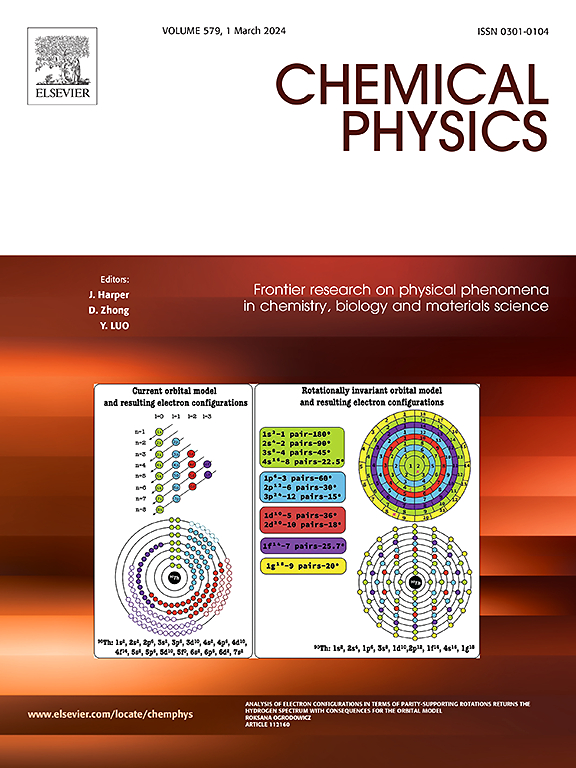光催化应用新型碳氮材料和原子掺杂提高光催化效率
IF 2.4
3区 化学
Q4 CHEMISTRY, PHYSICAL
引用次数: 0
摘要
我们设计了一种新型的二维类石墨烯氮化碳材料g-C7N5H。通过第一性原理计算,深入探讨了g-C7N5H的稳定性、电子结构、光学性质和光催化性能。在通过从头算分子动力学模拟证实其具有良好的热稳定性后,利用PBE和更精确的HSE06杂化泛函方法计算其能带结构。在HSE06方法下,该材料的带隙宽度为3.41 eV,可能导致其光催化活性有限。进一步计算带边势和光吸收光谱表明,虽然g-C7N5H具有光催化的基本条件,但其较窄的光吸收范围限制了催化效率。通过创新地引入不同位置掺杂硼/磷原子的策略,成功地减小了材料的带隙,扩大了材料的可见光吸收边界和强度。这项工作不仅揭示了二维类石墨烯材料在光催化中的潜在应用,而且为开发高效的太阳能转换装置开辟了一条新的途径。本文章由计算机程序翻译,如有差异,请以英文原文为准。
The photocatalysis application of a new carbon nitrogen material and atomic doping to improve photocatalytic efficiency
We designed a new type of two-dimensional graphene-like carbon nitride material, g-C7N5H. Through first-principles calculations, the stability, electronic structure, optical properties, and photocatalytic performance of g-C7N5H were deeply explored. After confirming its good thermal stability through Ab initio molecular dynamics simulation, the band structure was calculated using PBE and the more accurate HSE06 hybrid functional method. The band gap width of this material is 3.41 eV under the HSE06 method, which may lead to limited photocatalytic activity. Further calculations of the band edge potential and light absorption spectrum showed that although g-C7N5H has the basic conditions for photocatalysis, its narrow light absorption range restricts the catalytic efficiency. By innovatively introducing the strategy of doping boron/phosphorus atoms at different sites, the band gap of the material was successfully reduced, and the visible light absorption boundary and intensity were expanded. This work not only reveals the potential application of two-dimensional graphene-like materials in photocatalysis but also opens up a new way to develop efficient solar energy conversion devices.
求助全文
通过发布文献求助,成功后即可免费获取论文全文。
去求助
来源期刊

Chemical Physics
化学-物理:原子、分子和化学物理
CiteScore
4.60
自引率
4.30%
发文量
278
审稿时长
39 days
期刊介绍:
Chemical Physics publishes experimental and theoretical papers on all aspects of chemical physics. In this journal, experiments are related to theory, and in turn theoretical papers are related to present or future experiments. Subjects covered include: spectroscopy and molecular structure, interacting systems, relaxation phenomena, biological systems, materials, fundamental problems in molecular reactivity, molecular quantum theory and statistical mechanics. Computational chemistry studies of routine character are not appropriate for this journal.
 求助内容:
求助内容: 应助结果提醒方式:
应助结果提醒方式:


